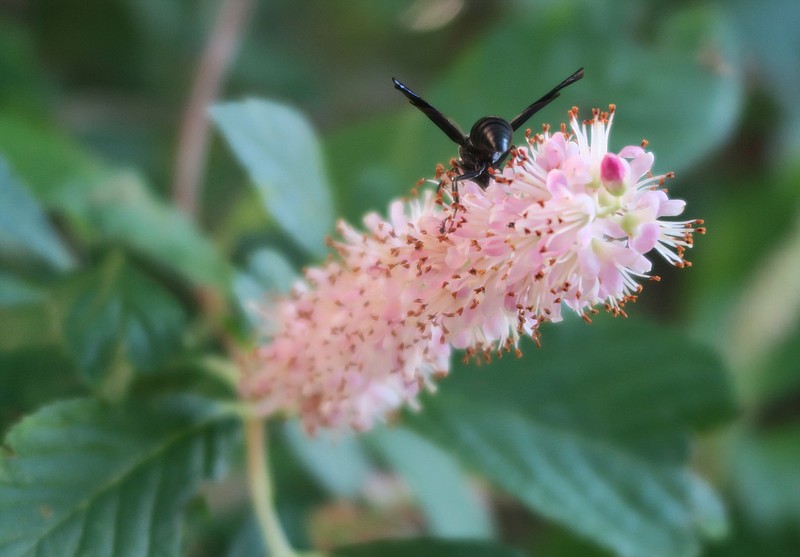AUGUST
Some days it is hard to believe it is already August, and other days it feels like 2020 has lasted a lifetime already and it is only August.
Most of us are still hunkering down and staying close to home, so we have plenty of time to garden. And what a salvation my garden has been to me. I often wonder what nongardeners do to stay sane.
We had a couple of hot, humid weeks in July, but overall, we have been fairly lucky. It appears August is starting off with a bang, with lower temperatures than we are used to. We can keep our fingers crossed and hope the trend continues. Weekly rainfall would also be a nice addition. If we don't get that, then don't forget to water.
I am starting to transition my vegetable garden, getting rid of some squash and cucumbers that have seen better days, and planting some more. I am also planting some new tomatoes and peppers to keep my supply going.
[Gallery not loading above? Click here for more photos » arkansasonline.com/81bloom/]
By midmonth, we can also begin to add cool-season crops, so water and mulch will definitely be critical.
• Continue to monitor for insects and diseases. If some of your plants are declining, pull them and replant. Good sanitation goes a long way toward healthy plants in the garden.
• Harvest vegetables early in the day to get the best flavor.
• August is a great time to assess what is working and what isn't. I always plant some of my favorite annuals, tropicals and vegetables, but I always try something new. Sometimes it works, sometimes it doesn't. I take weekly pictures so I can go back and compare, and that helps me remember.
• A few standouts this year are Sunpatiens and cupheas. I have Sunpatiens growing in sites with blistering hot, full sun; full morning sun and afternoon shade; and some in-between conditions. In containers, I do see some afternoon wilting in smaller pots in full sun, but those in large containers or with some afternoon shade, aren't wilting at all — provided they don't get too dry. I think they are keepers. All colors are thriving, but the orange is spectacular.
• I am also really loving all the cuphea varieties I have in the garden. They take the heat and laugh at it — they just don't stop. "Vermillionaire" is doing well. The "Sriracha Pink" is huge, but I am most impressed with "Honeybells." It has similar flowers to "Vermillionaire" but on a cascading plant that is covered in blooms. Hummingbirds love it.
• Take stock of your own garden. Deadhead perennials to keep them blooming longer.
• Container plants need daily watering this time of year, so with frequent irrigation, you need to fertilize more often than when plants are in the ground. I fertilize every few weeks after I water, and then I add more water. If you have plants that are playing out, there are replacement plants at all nurseries and garden centers, and we have a lot of growing season left. Watering will be important for them to get established when it is hot and dry outside.

• Everyone has been complaining about the weed load this year. Chambers bitters, mulberry weed, greenbrier, poison ivy, Virginia creeper and nutgrass are just a handful of the problems. I had one reader tell me he has renamed mulberry weed "Covid weed," because it is so horrendous in his yard.
You can't turn your back on any of these weeds. Give them an inch, and they will take the yard. Pull, hoe or spray. Be careful of sprays near any desirable plants. Mulching will help, but it is not 100% effective.
• For all our talk about watering annuals, vegetables and containers, don't forget your spring-blooming trees and shrubs. I have already seen new flower buds for next spring on camellias, tulip magnolias and dogwoods. More will be setting on other spring-blooming trees and shrubs through September. If they get too stressed or dry, they won't set as many buds.
• "Encore" or repeat-blooming azaleas are beginning to produce new blooms now and should continue through fall.
• No more pruning should be done to any spring-blooming plants — including the reblooming azaleas. Treat them just like spring bloomers and only prune after bloom in the spring. For now, all that you do is monitor water needs for all spring-blooming plants. No more fertilization or pruning is needed.
PLANT OF THE MONTH
Clethra alnifolia is commonly known as summersweet or sweet pepperbush.
Many gardeners overlook this lovely, native, sweet-smelling, deciduous shrub. It thrives in partial shade in moist, well-drained locations.
Mature size will vary based on the variety, with the standard varieties growing 6-8 feet tall. Dwarf varieties reach only 3-4 feet in height.
Flowers can be white or pink and are produced in spikes from July through mid-August.
Clethra spreads by suckers at the base but is not aggressive. The fragrant flowers attract bees and butterflies, and the blooms are followed by seed spikes that resemble peppercorns, thus the common name pepperbush. The fall foliage is a nice yellow.
There are no insect or disease problems to speak of. Compact varieties include "Hummingbird" and "Sixteen Candles." Some excellent larger varieties are "Pink Spires" and "Ruby Spice."
Read Janet Carson's blog at arkansasonline.com/planitjanet.
